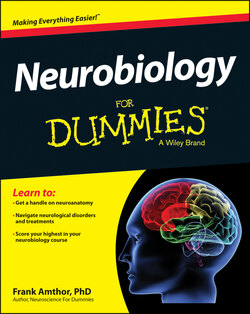Читать книгу Neurobiology For Dummies - Frank Amthor - Страница 28
The brainstem, limbic system, hypothalamus, and reticular formation
ОглавлениеWhen we look at a human brain from above, almost all that we see is neocortex. Students beginning to study the brain often mistakenly think that the neocortex is the real, important part of the brain that has largely superseded phylogenetically older structures that are now almost vestigial and unnecessary (like the appendix).
This is an understandable mistake. However, non-mammalian vertebrates like lizards, frogs, and crocodiles execute complex behavior without any neocortex. Some mammals have very little neocortex as well. The relationship between the neocortex and “lower” brain areas is as much their servant as master, an idea Chapter 7 explores.
The brainstem is not only a transition region between the spinal cord and higher brain centers, but an essential integration and control center by itself. The brainstem includes the medulla at the intersection with the spinal cord, the pons just above the medulla, and the midbrain above that. The cerebellum hangs off the back of the brain behind the pons. The brainstem nuclei convey information between the senses and the spinal cord and higher brain centers. Brainstem nuclei also control essential aspects of homeostasis such as the regulation of heart rate, respiration, and temperature.
Limbic system is an archaic term for a diverse set of subcortical brain areas that are thought to control instinctive behaviors. Areas included in the limbic system’s original formation include the hippocampus, amygdala, and cingulate cortex. Chapter 7 discusses how these areas interact with neocortex and other parts of the brain, not as a modular system, but as a set of crucial brain areas each with distinct functions.
The hypothalamus sits just above the pituitary gland and receives sensory input from the autonomic nervous system. It controls many homeostatic processes (such as circadian rhythms — the body’s internal “clock”) by secretions of hormones into the bloodstream and by projecting to the pituitary, which itself secretes hormones.
The reticular formation is a diffuse network of neurons and axon tracts that runs through the brainstem up into portions of the thalamus. This area controls body state through processes such as controlling wakefulness versus sleep, alertness, and homeostatic mechanisms such as heart rate.
